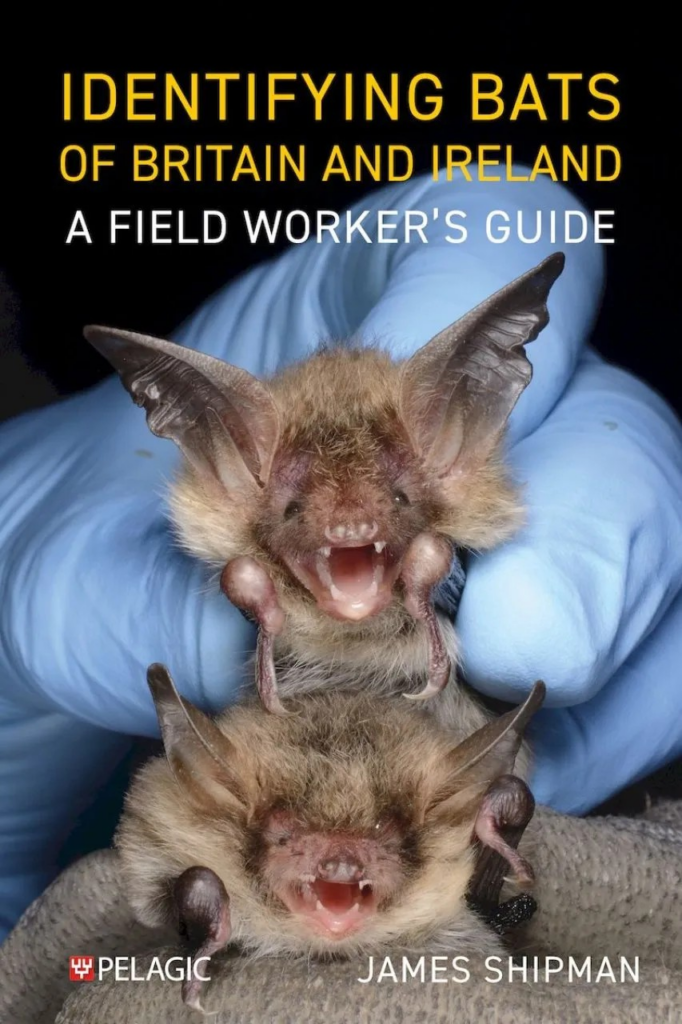 Packed with insider information, Identifying Bats of Britain and Ireland offers expert guidance on how to identify bats in the hand for beginners and field ecologists alike. Filling a gap between introductory books and more technical volumes, this humorous guide uses detailed images, diagrams and tables to communicate, in simple terms, the fundamentals of bat ecology, survey equipment, techniques required when training for a bat licence and the key features that distinguish one species from another.
Packed with insider information, Identifying Bats of Britain and Ireland offers expert guidance on how to identify bats in the hand for beginners and field ecologists alike. Filling a gap between introductory books and more technical volumes, this humorous guide uses detailed images, diagrams and tables to communicate, in simple terms, the fundamentals of bat ecology, survey equipment, techniques required when training for a bat licence and the key features that distinguish one species from another.

James Shipman is an ecologist and bat enthusiast who loves to inspire and motivate future bat workers. He works as a senior ecologist and is involved in numerous bat-related projects. In 2016 he was recognised with the Bat Conservation Trust’s Pete Guest Award for outstanding contribution to bat conservation.
We recently chatted with James about his inspiration for the book, which challenges he faced when constructing a detailed identification guide and more.
Can you tell us a little about yourself, your history of working with bats, and why you chose to write this book?
Originally I planned to work as a game ranger in South Africa, but after returning to the UK, I studied zoology, met my wife and fell into landscaping as my first career and passion. A roofer and a builder both mentioned that I may ‘like’ working with bats, as I’m an animal person, so I explored the idea of them as a hobby!
After a few events I was gripped, and I have now volunteered with bats for nearly 15 years with the intention to install passion, enthusiasm and fun into everything bat-related for volunteers and professionals! Within this time I have helped to train over 50-75 individuals (could be more, I don’t count!) and after nearly 20 years in the landscaping sector, I now work in ecology as a professional.
During my years of training, I found that the more serious and technical books available out there made it hard to learn, and that digestible guidance that was fun, relatable and easy to work with would be beneficial! A lot of my trainees suggested the idea for the book originally, and other bat authors with Pelagic mentioned to the publishers that I would bring a nice approach to ID for ecologists – so here we are.

You have taken a relatable, and oftentimes humorous, approach in the way Identifying Bats of Britain and Ireland was written. Why did you feel this was important, and with that in mind who is this book designed for?
Who said science, research and volunteering can’t be fun! If you enjoy what you do, it’s more fun and you usually get more out of it!
I thought it was important to bring my open, welcoming personality to bats and volunteering into the book, as well as an understanding of how hard it can be to learn in the world of ecology.
Public opinion of bats is often contested, and their associations with rabies and vampirism contribute to this negative perception. This guide contains a section on the myths and rumours of bats – why did you feel it was important to debunk these misconceptions?
Well spotted! It’s one of my favourite parts of any walk, talk, training or even in the book itself. Bats have such a negative view through media – whether it’s Halloween, Covid or other diseases, the positives (not just bats but anything in life) are very rarely talked about! So let’s try and win one for the bats – 2,000 less mosquito bites a night is a good seller!

This guide also features vagrants and species that are extremely rare in the UK. How did you navigate writing about species that you may not have met? And did you find it challenging to construct identification guidance for these scarcer species?
Fortunately I have handled and seen these species abroad in my years of volunteering and training (which I will touch more on in your last question), and I have even been lucky to handle one or two of these in the UK too!
The hardest part of it all was trying to address the elephant in the room (or maybe I should say vagrant in the sky!). I believe there are now 21 species found in the UK – some of these are not proven residents, but are not far off – plus a few others that I chose not to include at the time of publication as records were too scarce!

Were there any other challenges that you came across in the process of writing this book?
As previously mentioned, mental health is important in all areas of life, and I felt that slight delays in finishing this book were due to anxiety of judgement on the final product. However, many close friends and ex-trainees assured me that more positives will come of this work than negatives.
The book is aimed at any level of bat worker and should taken with a light hearted approach. It’s important to address these things when discussing books and publishing – it’s a hard process, and without friends, family and a decent publisher (plus the bats) you can sometimes feel isolated. Luckily, I had the best support from all of the above!
What’s your advice for those just getting started in this field?
Well I could say read the book (haha), there are some good sections about starting out with bats. In short, don’t give up, persist, find bat workers who are open, friendly and passionate with no judgement (they are out there, I’m one of them), and most importantly have fun!
Finally, what’s next for you? Do you have plans for more books in the future?
Um… a break! It’s harder than I ever imagined. However, I would love to eventually write a similar book for bats of Europe! But it may take a while to compile some new jokes!
Identifying Bats of Britain and Ireland is available from our online bookstore here.
